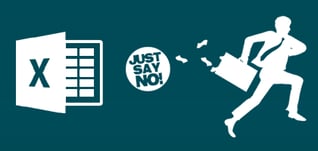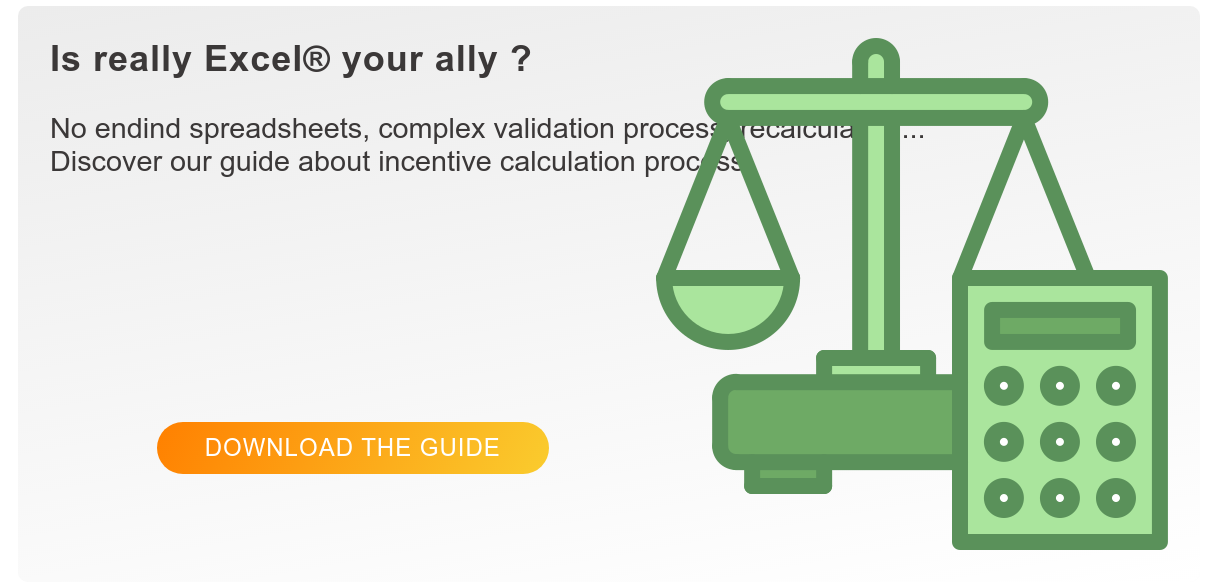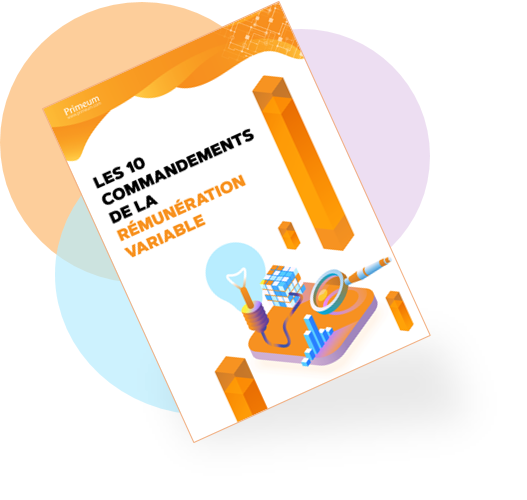The goal of setting up a incentive compensation system is the motivation of all your employees. But sometimes, by simple technical mistakes, you push them to have behaviors not going in the direction of the performances expected by the company.
Decryption of the tools' impact on motivation with Hervé De Riberolles, international director of Primeum.
YOU SAY THAT THE USE OF EXCEL MAKES, BY CONSTRUCTION, SCALES WITH THRESHOLD EFFECTS WHICH CONSTITUTES A DEVIATION. CAN YOU EXPLAIN WHAT?
The company expects from a collaborator that his performance is continuous, that he is encouraged to go a little further in his level of performance. This permanent progression should logically result in a continuous compensation curve and not in a tiered distribution system.
However, it is very difficult in Excel to create a continuous function. The tool creates small steps. For example, with a bonus of achieving 85% of goals, then 90% and 95%. So that a collaborator between 91 and 94% will receive exactly the same bonus. He will have to wait at 95% to receive a higher bonus. It will therefore be best to stop at 90% if he is not sure to reach the next threshold at 95%. The calculation of bonus with Excel is therefore a puzzle and creates threshold effects.
Payout curves should therefore be used for continuously changing bonusess in order not to have stairs producing deleterious threshold effects in terms of motivation.
Tools for large accounts or for SMEs & start-ups exist with our professional tool dedicated to SMEs & Start-up allows access to curve banks and set up a free variable compensation system any threshold and adapted to all teams.
It also makes it possible to take into account a proration of bonuses linked to possible HR rules for each employee. For example, the tool makes it possible to simplify the various intermediate calculations of the bonus, to be carried out for an absent employee several days during the duration of the performance which Excel cannot take into consideration.
WHY AVOID THRESHOLD EFFECTS IN AN INCENTIVE COMPENSATION SYSTEM?
An incentive compensation system established with thresholds leads the commercial to a "fridge effect". The sales person having crossed a level of bonus a few days before the end of the performance period, if he considers that his probability is low to reach the next threshold in the few remaining days, will tend to keep his customer files. He can then bring out these files during the next performance period and thus ensure higher bonuses. This behavior is unwanted because it leads to under-commercial efficiency but is simply human and cannot be avoided without a continuous payout curve.
If he continued his momentum, he would even risk, for a next period, that his supervisor set him even higher goals. In general, the commercial people will not be trapped twice!
HOW THEN ADAPT TOOLS AND MAKE MOST OF THE EMPLOYEES KEEP THEIR MOTIVATION?
It's all about good selectivity settings, means a good ratio between the number of winners and losers. We must also think about differentiating the bonuses from those who have just achieved the goal and those who have significantly exceeded.
A bonus system must bring the maximum number of employees to the performance, it becomes counterproductive when it makes too many losers. If 70% of your employees receive less than half of the target bonus, you risk demotivating most of the team. Your results would only be based on 30% of employees. It is important to reverse this trend and bring as many people as possible to the performance by adapting the selectivity of your scheme.
In order not to produce major negative effects in terms of motivation, also adapt the shape of your compensation curve to the dispersion (deviation from the average) of the results obtained by your sales representatives.
Indeed, the overall objective of the company can be reached but there can be a strong disparity between a team having a strong dispersion between the collaborators (people being at 50% of the objective and others at 150% ) and a team where the dispersion is much lower (all being for example between 90 and 110% of their objective).
In the first team, you would have had a lot of losers with a scale between 90 and 110%. All those between 50 and 90% of their target would not have been motivated by their bonus scheme since the beginning because they knew they could not have aimed to earn this bonus. And all those over 110% would have the same thing for very different performances (a person at 150% gets the same thing as a person at 110%). In the second team, with a starting scale of 60% and ending at 140%, the majority of your employees would have been winners and encouraged to produce more performances.
 Excel does not allow you to precisely adjust the selectivity of your scheme and to have a clear view on these differences between your different collaborators.
Excel does not allow you to precisely adjust the selectivity of your scheme and to have a clear view on these differences between your different collaborators.
The platform offers to SME & Start-ups and designers of incentive compensation schemes to follow them step by step to better calibrate their scheme. They have access at any time, by phone, to experts of the incentive compensation to help them in their choices.

![[Interview] No, Excel is not the right tool for calculating the incentive compensation for your employees](https://www.primeum.com/hubfs/Imported_Blog_Media/shutterstock_197051783-2.jpg)



